Table of Contents
Regime change, a concept that holds the potential to reshape nations and rewrite history, represents a momentous shift in political power within a country. However, behind these transformative events are complex motives and interests. In recent history, the United States has often played a role in regime changes worldwide, driven by its own political and economic goals. The riches from the opium war and the power vacuum created after the second world war played a crucial role in America’s current global status. It’s a country with a history spanning less than 300 years, and it is filled with migrants, each with their own issues and agendas related to the territories where they came from. This article focuses on notable regime changes of the past five decades, with an emphasis on the United States’ involvement in orchestrating such transitions.
In the past, regime changes frequently involved the CIA organizing coup d’états to overthrow democratically elected leaders and establish regimes that aligned with U.S. objectives. This resulted in the emergence of oppressive dictatorships, governments and sometimes even terrorist organizations that committed grave human rights violations. For instance, Latin America experienced a turbulent period in the 1980s, marked by widespread terror inflicted by rulers that are allied to the Washington.
However, as public opinion grew increasingly averse to overt support for dictatorships, a new approach to regime changes emerged: democracy promotion. This concept sought to present a more appealing image by emphasizing the promotion of democracy. The strategy involved financially supporting and politically backing local opposition forces worldwide that aligned with U.S. interests.
Dr. William Robinson, a prominent expert on regime change through democracy promotion, extensively studied this approach. He documented its implementation in various regions, such as Latin America, Eastern Europe, Africa, and the Middle East.
To execute this strategy, the U.S. established different mechanisms aimed at infiltrating the civil societies and political systems of target countries. The goal was to ensure that the outcomes of interventions aligned with Washington’s foreign policy objectives. Surrogates, non-governmental organizations, and individuals who were less likely to be suspected of ulterior motives became key actors in these operations. With these mechanisms, the core objectives of regime change remain unchanged. Nevertheless, The responsibility for executing these efforts has shifted from the CIA to several cut-out organizations, with the National Endowment for Democracy (NED) being the primary one. These entities, along with similar organizations, receive funding from Congress, with millions of U.S. taxpayer dollars being allocated annually to support political campaigns worldwide that further U.S. interests. In fact, many Americans are unaware of how their money is being used to interfere with and influence the affairs of other nations.
The Role of National endowment for democracy (NED)
In the 1980s, the Regan administration was determined to revitalize U.S. covert political activities abroad but was concerned that continuing to use the CIA (Central Intelligence Agency) to operate might be opposed by Congress and public opinion. Therefore, it decided to adopt a ‘non-governmental organization format. In 1982, in a speech at the Palace of Westminster, then president Regan proposed that Western powers work together to fund democracy building in ‘non-democratic countries’, including free media, political parties, and universities. The next year National Endowment for Democracy was established. Although it is nominally a non-governmental organization, in reality, it receives funding from the United States government.
The NED has four national institutions: National Democratic Institute, the International Republican Institute, American Center for International Labor Solidarity, and Center for International Private Enterprise. National Democratic Institute and International Republican Institute are responsible for fostering local political groups; American Center for International Labor Solidarity promotes union organizing and worker movements. Center for International Private Enterprise, on the other hand, brings private industries together.
Similarity with Communist International (Comintern)
The Communist International (Comintern) was an international organization that promoted world communism. It was founded in Moscow, Russia in March 1919 by Vladimir Lenin and the Russian Communist Party (Bolsheviks). NED and Comintern share some similarities;
Global Reach: NED operates in many countries across the globe in an effort to encourage politics of democracy while Comintern sought to promulgate communism worldwide when it was active.
Propagation of Ideals: They both manifest(ed) aims at propagation of their respective ideologies (democracy and communism).
Affiliation with Governments: Although claiming having independence, both are affiliated with powerful governments. NED is substantially run by government funding from U.S while Comintern operated as an instrument to Soviet policy.
Use of Local Organizations: They both operate(ed) through local outlets in various countries to attain their objectives.
Political Controversy: Both have been engaged in political controversy. Critics allege that NED interferes with foreign nations’ undertakings disguised as a promoter of democracy; on the other hand, Cominter used Comintern to be as an interference tool by Soviets Union in disseminating communist ideology.
Promotion of Far Left Imperialism/Liberal Imperialism
Imperialist leftists are a section of the political spectrum where individuals or groups advocate leftist ideologies – such as socialism, communism, or progressivism – but also support actions typically associated with imperialism. This might include military intervention and economic exploitation of other countries for the sake of spreading certain values or achieving political aims (to spread “liberal democracy”).
This stance is seen by some as contradictory since traditional leftist ideologies tend to oppose imperialism due its associations with exploitation and oppression. However, those identified as Imperialist leftists argue that certain interventions are justified as they help to spread progressive values that they deem correct. Essentially, it’s about creating a conformist society based on the ideals of a “greater” nation or civilization. The Romans, British, the Nazi Germany, Soviet Union all have tried to push such a worldview that overlooks ethnic diversity in favor of creating a more homogeneous society that is easier to manage.
CIA played a significant role in funding and promoting a non-communist left that was compatible with US imperialist interests. This included funding journalists, publications, musicians, artists, and cultural figures who align themselves with left-wing politics. BreadTube (collective name for a bunch of faux lefties who preach socialism, communism, marxism etc on social media but then shepherd their followers into voting for the establishment parties they are supposed to oppose), and mainstream media outlets are vehicles of this agenda. It highlights how these platforms often equate criticism of U.S. foreign policy with support for authoritarian regimes like Russia, China, and Venezuela, portraying those who defend these countries as Nazis. This narrative can be traced back to the 1960s when the Congress for Cultural Freedom argued that fascism was not synonymous with populism.
NED Operations
Under the orders of the U.S. government, NED manipulates and directs a number of NGOs around the world to export U.S. values to target countries and regions, carry out subversive infiltration and sabotage, and incite ‘democracy movements.’ Internationally, the NED is also known as ‘the Second CIA.’
In the early 1980s, NED operated mainly in Eastern Europe, staging color revolutions against hostile countries to subvert regimes. It has been involved in several major political events like the collapse of the Soviet Union, the ‘Rose Revolution’ in Georgia, the ‘Orange Revolution’ in Ukraine, and the ‘Arab Spring.’ It supports opposition groups in targeted areas through organizations like the National Democratic Institute for International Affairs, the International Republican Institute, and the International Foundation for Election Systems.
NED still continues to receive funds from the U.S. government. It channels these funds to opposition groups in targeted countries and regions through the National Democratic Institute for International Affairs, the International Republican Institute, the International Foundation for Election Systems, Freedom House, and other affiliated organizations.
NED also provides guidance on ‘street campaigns’ to improve the mobilization capacity of opposition political parties (Hong Kong protests 2019, 2022 Kazakh unrest). However, almost all of these revolutions and wars are regime changes rather than a change in the type of regime. In fact, these events are nothing more than the replacement of anti-Western elites with pro-Western elites to serve U.S. strategic interests rather than help these countries and regions achieve true democracy.
The West has proven that it does not have friends or enemies. It has only one enemy – anyone who stands in the way of its material interests. Oppressive Governments, Religious Extremists, Nazis, Communists or anyone else are not the enemies of the West. If they serve the interests (of the West) they are friends. If they oppose those interests they are enemies. In other words, they have zero principles – Bashar al-Assad, Syrian President.
Given below are some regime change operations and proxy wars instigated and supported by the U.S and its western allies.
-
1 Korean War 1950
The Korean War began in 1950 when North Korea invaded South Korea. The Soviet Union and China supported North Korea, while the United States and its allies supported South Korea. The war ended with an armistice in 1953.
Before the war, Korea was ruled by Japan for 35 years until Japan surrendered in 1945. After that, the United States and the Soviet Union divided Korea into two parts, with each country controlling one part. This division led to the creation of two separate governments in 1948: North Korea led by Kim Il Sung, and South Korea, led by Syngman Rhee. Both sides claimed to be the rightful government of all of Korea and disagreed on the border.
Attempts to negotiate reunification failed, and on June 25th, 1950, North Korean forces crossed the border into South Korea. The United Nations Security Council called it an invasion and authorized the formation of a U.N. force to defend South Korea. The majority of the U.N. forces were led by the United States.
The United States’ merciless bombing campaign against North Korea, which lasted from 1950 to 1953, was a pivotal moment in the conflict that ultimately made it near impossible to achieve a peaceful resolution with the North Korean people. This devastating military operation has been described by some historians as even more destructive than the damage inflicted upon Germany and Japan during World War II.
The U.S. dropped around 635,000 tons of bombs on North Korea, including roughly 32,000 tons of napalm - a highly flammable incendiary weapon used to burn down structures and cause severe injuries.
The intense bombing led to significant civilian casualties and widespread destruction of infrastructure like homes, schools, hospitals, factories, and roads. It’s estimated that up to one-third of the population in urban areas were killed or injured as a result.
In response to increasing Chinese intervention in support of North Korean forces in late 1950s and early ‘51s’, General Douglas MacArthur called for an intensified air campaign which included carpet bombing - dropping large numbers of bombs over a wide area without specific target selection - aiming at wholesale destruction of North Korean towns and cities. This generated considerable controversy due to the massive devastation it caused.
-
2 Iran 1953
The coup d’état on August 19, 1953, in Iran marked a significant turning point in the country’s political history. This event, often referred to as Operation Ajax in the United States and Operation Boot in the United Kingdom, resulted in the ousting of Iran’s democratically elected Prime Minister, Mohammad Mosaddegh.
In the early 1950s, Prime Minister Mosaddegh had become a symbol of Iranian nationalism and self-determination, primarily due to his campaign for the nationalization of the Iranian oil industry, which had been controlled by foreign companies, mainly the British-owned Anglo-Iranian Oil Company (AIOC), now known as BP.
Mosaddegh’s move towards nationalization was seen as a direct threat to Western interests, particularly those of the United Kingdom. The British government vehemently opposed this action and sought assistance from the United States, arguing that Iran was falling under communist influence and was at risk of aligning with the Soviet Union.
Despite initial hesitation, the newly elected President Eisenhower and his administration were persuaded by Cold War fears, thus agreeing to support a secret plan coordinated by the Central Intelligence Agency (CIA) and Britain’s Secret Intelligence Service (SIS) to overthrow Mosaddegh.
The operation involved a complex mix of political subversion, propaganda, and orchestration of street protests. On August 19, 1953, military officers loyal to the Shah arrested Mosaddegh. With the Prime Minister out of the way, the Shah, who had fled the country briefly during the coup, returned to power.
Although the coup was initially successful in achieving its immediate objective - reinstating the Shah’s power and control - it had far-reaching consequences. The Shah’s increasingly authoritarian rule led to widespread discontent and ultimately laid the groundwork for the Islamic Revolution of 1979, which overthrew the monarchy and established an hardline Islamic Republic in Iran.
The U.S. and U.K.’s involvement in the coup was officially acknowledged decades later. This intervention has since been widely criticized and is seen as a significant factor contributing to anti-Western sentiment in Iran and broader Middle East.
-
3 Guatemala 1954
The 1954 coup in Guatemala, known as Golpe de Estado en Guatemala de 1954, was orchestrated by the CIA under the covert operation PBSuccess. It overthrew the democratically elected President Jacobo Árbenz and marked the end of the Guatemalan Revolution of 1944-1954. The coup installed Carlos Castillo Armas as the leader of a military dictatorship, initiating a series of U.S.-backed authoritarian rulers in Guatemala.
The Guatemalan Revolution began in 1944 after a popular uprising removed the military dictatorship of Jorge Ubico. Juan José Arévalo was elected as the first president in Guatemala's democratic election. Arévalo implemented reforms such as a minimum wage and expanded suffrage, transforming Guatemala into a democracy. Árbenz succeeded Arévalo in 1951 and implemented land reforms that redistributed property to landless peasants.
The United Fruit Company (an American multinational corporation), whose profits were affected by the end of exploitative labor practices in Guatemala, conducted a persuasive lobbying campaign to convince the U.S. to overthrow the Guatemalan government. President Harry Truman authorized Operation PBFortune in 1952 to remove Árbenz, which served as a precursor to PBSuccess.
The next U.S. president Dwight D. Eisenhower pledged a stronger stance against communism. Eisenhower's advisers, John Foster Dulles and Allen Dulles, had connections to the UFC, further motivating them to take action against the Guatemalan government. The U.S. government also exaggerated the extent of communist influence within Árbenz's administration. In August 1953, Eisenhower authorized the CIA to execute Operation PBSuccess. The CIA provided arms, funding, and training to a force of 480 men led by Carlos Castillo Armas.
The coup was preceded by U.S. efforts to isolate and criticize Guatemala on the international stage. Castillo Armas' forces invaded Guatemala on June 18th, 1954, while engaging in intense psychological warfare. They utilized a radio station to broadcast anti-government propaganda, manipulated military events to favor the rebellion, conducted air bombings of Guatemala City, and established a naval blockade. Although the invasion force faced military setbacks, the psychological warfare and the fear of a U.S. invasion intimidated the Guatemalan army, leading them to refuse to fight. Árbenz attempted to arm civilians to resist the invasion but eventually resigned on June 27th. Ten days later, Castillo Armas assumed the presidency following negotiations in San Salvador.
The coup was widely condemned internationally. It was seen as a major blow to democracy in Guatemala and further fueled anti-U.S. sentiment in Latin America. In an attempt to justify the coup, the CIA launched Operation PBHistory to find evidence of Soviet influence in Guatemala during Árbenz's tenure, but the operation proved unsuccessful. Castillo Armas quickly consolidated dictatorial powers, banned opposition parties, imprisoned and tortured political opponents, and reversed the social reforms of the revolution. Guatemala subsequently experienced nearly four decades of civil war as leftist guerrillas fought against a series of U.S.-backed authoritarian regimes marked by severe human rights abuses, including the genocide of the Maya people.
-
4 Indonesia 1958
In 1958, President Eisenhower's order to the CIA to overthrow the Sukarno government marked a covert operation aimed at removing Sukarno from power. However, the plans were quickly exposed by Soviet intelligence, leading to widespread knowledge of the "American Plot to Overthrow Sukarno."
The CIA's involvement in the coup became apparent when an American pilot was shot down, which communist activists used as evidence of Western intervention in Indonesian affairs. This revelation intensified opposition to the coup and provided a rallying point for communist supporters. The failed coup served to strengthen Sukarno's position and emboldened his pro-communist leanings.
The CIA's strategy involved establishing operational bases in the Philippines and employing Filipino CIA paramilitary officers to make contact with Indonesian military forces. They also provided weapons and financial support to rebel military forces and used radio stations to broadcast anti-Sukarno messages as part of psychological warfare. However, the CIA underestimated the strength of the Indonesian Army and failed to recognize that many top commanders were staunchly anti-communist, resulting in clashes between American-aligned forces.
The Indonesian government, led by Sukarno, fiercely opposed the rebels, and loyal military forces were mobilized to suppress the rebellion. They launched attacks on rebel strongholds, including airstrikes and a naval blockade. Eventually, the rebel forces were defeated, and the coup came to a transparent and complete failure. This failure marked a significant setback for the CIA, highlighting their inability to compete with Soviet covert intelligence and the repercussions of underestimating the local dynamics and anti-communist sentiment within the Indonesian Army.
The aftermath of the failed coup further solidified Sukarno's position, and the United Nations supported the formation of Malaysia in Indonesia's northernmost territory. Sukarno's alignment with communist interests became more pronounced, setting the stage for further political developments and tensions in the years to come.
-
5 Cuba 1961

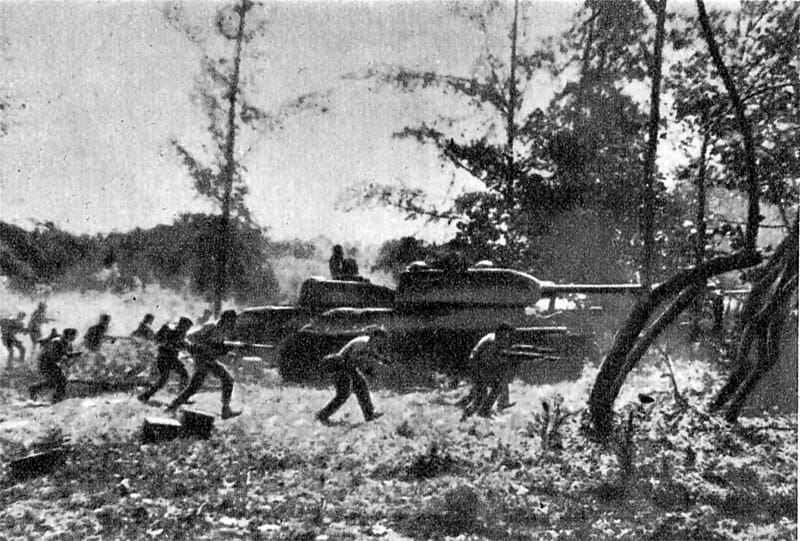
When Fidel Castro came to power in Cuba in 1959 after the left-wing revolution, the new regime distanced itself from the United States and aligned closely with the Soviet Union. This raised concerns in the U.S. due to Cuba's proximity and its significance in the Cold War. In response, President Eisenhower ordered the CIA to develop a plan to overthrow Castro's government. The CIA trained and funded a group of exiled Cuban counter-revolutionaries, known as Brigade 2506, as part of this operation.
When President John F. Kennedy took office, he approved the CIA's plan, and the invasion of Cuba was set in motion. However, the attack, known as the Bay of Pigs invasion, quickly encountered setbacks. The Cuban armed forces, under Castro's command, swiftly defeated the invading forces within two days. The failed invasion bolstered Castro's administration, which openly embraced socialism and strengthened its ties with the Soviet Union. The Kennedy administration conducted an assessment of the Bay of Pigs defeat and subsequently initiated a new covert program, Operation Mongoose, in an attempt to remove the Castro regime from power.
Operation Mongoose, overseen by the CIA and Department of Defense, involved a wide range of plans, including political, psychological, military, sabotage, and intelligence operations. It even considered assassination attempts on political leaders, including Castro. However, despite some actions being deployed, Operation Mongoose failed to achieve its primary objectives. Meanwhile, the U.S. became increasingly concerned about Soviet arms shipments to Cuba, with the possibility of nuclear warheads being introduced. This led to the suspension of Operation Mongoose in October 1962 as the Cuban Missile Crisis unfolded, marking one of the most dangerous moments of the Cold War between the United States and the Soviet Union.
-
6 Vietnam 1964
The Vietnam War (1955-1975) was a conflict fought between the communist government of North Vietnam, supported by the Soviet Union, China and other communist allies, and the government of South Vietnam, which was backed by the United States and other anti-communist allies. The war is considered a Cold War-era proxy conflict. It began as an insurgency by communist forces in Vietnam against French colonial rule in the mid-20th century and escalated into a full-fledged war after the French withdrawal from Indochina in 1954.
The Gulf of Tonkin incident played a crucial role in escalating American involvement in the Vietnam War. In August 1964, two alleged attacks on US Navy destroyers by North Vietnamese naval vessels occurred in the Gulf of Tonkin. These incidents were said to have happened on August 2 and August 4. However, evidence later emerged suggesting that the second attack might not have taken place at all.
The reported attacks were used by President Lyndon B. Johnson as justification for seeking congressional approval to escalate American military involvement in Vietnam. On August 7, just days after the alleged incidents, Congress passed the Gulf of Tonkin Resolution, which gave Johnson broad powers to use military force in Southeast Asia without a formal declaration of war.
As American casualties mounted and news about atrocities committed during the conflict spread to Western media outlets, public support for U.S involvement waned significantly.
The war officially ended on April 30th, 1975, when North Vietnamese troops captured Saigon (now Ho Chi Minh City), the capital of South Vietnam. The fall of Saigon marked a significant defeat for the United States in one of the longest conflicts in its history. The American army had to face a similar shameful withdrawal in Afghanistan years later.
-
7 Congo 1964
The period from 1960 to 1965 saw political turmoil and conflict in the Congo, following its independence from Belgium. The crisis was a proxy conflict during the Cold War, with the Soviet Union and the United States supporting opposing factions in a series of civil wars. The crisis is estimated to have claimed around 100,000 lives.
When Congo gained independence from Belgium on June 30, 1960, Patrice Lumumba became its first Prime Minister. His charisma instilled hope for the future among his people. His anti-colonial stance and goal of a united Congo made Belgian authorities and Western powers, like the US, uneasy.
Even after Congo's independence, Belgium maintained significant economic interests in the country. In an effort to maintain control over their investments and weaken Lumumba's government, Belgian officials backed separatist movements in regions like Katanga, known for their abundant mineral deposits.
The Cold War context led to US concerns that Lumumba's anti-Western rhetoric might cause him to align with Soviet interests. Consequently, President Eisenhower gave the CIA the go-ahead to conduct covert operations against Lumumba's government.
The involvement of the Soviet Union resulted in a split in the Congolese government and a stalemate between Lumumba and President Joseph Kasa-Vubu. Mobutu Sese Seko, who commanded the army, staged a coup, expelled the Soviet advisors, and established a new government under his control. Lumumba was taken into custody and then executed in 1961. The involvement of Belgian officers in connection to all these has been well documented, while the CIA’s role remains a subject of speculation due to insufficient evidence to conclusively prove their direct participation in the murder.
Belgium and the US played crucial roles in destabilizing Congo's independent government, led by Patrice Lumumba, ultimately culminating in his assassination.
-
8 Brazil 1964

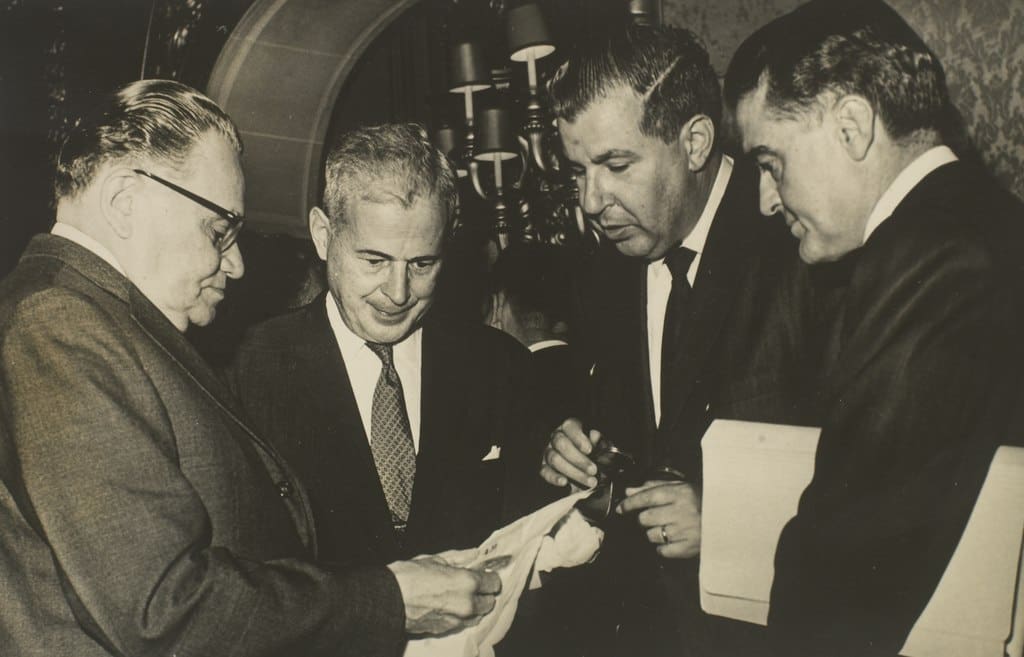
In March 1964, a coup took place in Brazil that resulted in the overthrow of President João Goulart by the Brazilian Armed Forces. The coup occurred from March 31st to April 1st and was supported by the speaker of the Brazilian Congress, who declared the presidency vacant. Goulart, a member of the Brazilian Labour Party, had been democratically elected as vice president. The presidency was originally won by Jânio Quadros, a conservative backed by the National Democratic Union, but he resigned in 1961. According to the Brazilian Constitution, Goulart should have automatically assumed the presidency, but right-wing militants accused him of being a communist and tried to prevent him from taking office. Eventually, a compromise was reached, and the parliamentary system replaced the presidential system, with Goulart continuing as head of state and Tancredo Neves becoming the prime minister.
However, in 1963, a referendum reinstated the presidential system, and Goulart assumed full powers. His presidency faced numerous challenges, including political problems and Cold War disputes, which contributed to its destabilization. Goulart's proposed Basic Reforms Plan aimed to redistribute the profits of large companies, but it was viewed as a "socialist threat" by right-wing factions and the military. Large-scale demonstrations against the government, known as the Marches of the Family with God for Freedom, were organized in opposition to Goulart's policies.
The coup in Brazil brought about a military regime aligned with the interests of the United States government. This military dictatorship lasted for 21 years until 1985, when Tancredo Neves, who had played a role in the negotiations during the coup, was indirectly elected as the first civilian president since the 1960 elections.
-
9 Dominican Republic 1965

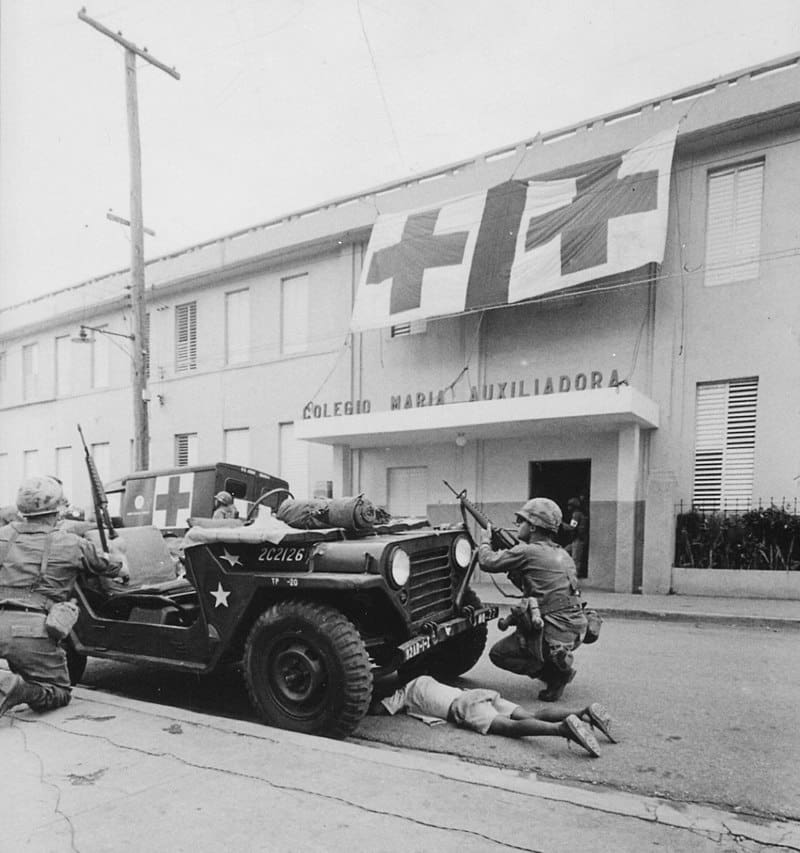
The Dominican Civil War, also known as the April Revolution, occurred from April 24th to September 3rd, 1965, in Santo Domingo, Dominican Republic. It began when supporters of ousted President Juan Bosch, both civilian and military, removed President Donald Reid Cabral, who had come to power through a military installation. This second coup prompted General Elías Wessin y Wessin to mobilize loyalist military forces in support of President Reid, leading to an armed conflict against the rebels known as the "constitutionalists." The rebels distributed weapons to civilian sympathizers.
Allegations of communist support for the rebels, including foreign involvement, led to the intervention of the United States in the conflict under the codename Operation Power Pack. Eventually, the conflict resulted in an occupation of the Dominican Republic by the Inter-American Peace Force, representing the Organization of American States. Elections were held in 1966, and Joaquín Balaguer was elected as the new president. Later that year, foreign troops withdrew from the country.
As a result of Operation Power Pack, communism did not take hold in the Dominican Republic. However, critics argue that it set a precedent for further U.S. interventions in Latin America.
-
10 Argentina 1976

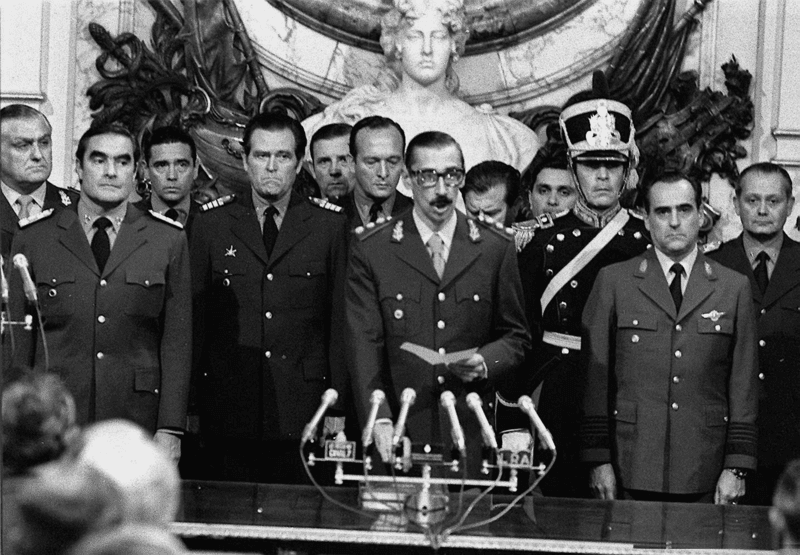
The 1976 Argentine coup d'état, which ousted President Isabel Perón on March 24th, 1976, had elements of right-wing influence but did not strictly adhere to a specific ideology. While it emphasized the restoration of order and security, it was not a traditional right-wing coup. Following the coup, a military junta was established, led by Lieutenant General Jorge Rafael Videla, Admiral Emilio Eduardo Massera, and Brigadier-General Orlando Ramón Agosti. The junta's political process was officially named the "National Reorganization Process," and although its original members changed, it remained in power until the restoration of democratic governance on December 10th, 1983.
The coup had been planned since October 1975, and the Peron government became aware of the preparations two months before its execution. Henry Kissinger, a U.S. official, held multiple meetings with Argentine Armed Forces leaders after the coup, urging them to swiftly eliminate their opponents before concerns about human rights abuses grew in the United States.
Due to the systematic persecution of a social minority during this period, the events have been classified as a genocidal process. This classification has been established through the trials of those responsible for crimes against humanity.
-
11 Iraq (to save Saddam) 1980
The United States played a significant role in the Iran-Iraq War (1980-1988), though it was not officially involved as a combatant. The United States supported Iraq under Saddam Hussein’s regime, believing that it would serve as a buffer against Iran’s expanding influence and revolutionary ideology. The US provided logistics support, military intelligence, financial assistance, and weapons and assistance in the development of chemical weapons (weapons of mass destruction/WMDs) to Iraq.
In 1983, the US launched Operation Staunch to restrict Iran’s ability to obtain advanced weaponry from abroad. This operation consisted of diplomatic efforts aimed at convincing other countries not to sell arms or provide military aid to Iran.
In August 2013, Foreign Policy Magazine published an article based on CIA documents and interviews with former intelligence officials. The article suggested that the U.S. was aware of Iraq’s use of chemical weapons against Iranian forces and civilians but continued to provide assistance due to strategic interests in the region.
These revelations have sparked debates about the extent of U.S. involvement and responsibility for Iraq’s actions at that time, as well as a broader discussion about international relations and foreign policy decision-making.
-
12 Nicaragua 1981
The Nicaraguan Revolution, also known as the Sandinista Revolution, occurred from the 1960s to the 1990s and encompassed various phases. It began with the opposition to the Somoza dictatorship in the 1960s and 1970s. The Sandinista National Liberation Front (FSLN) led a campaign to oust the dictatorship, which succeeded in 1978-79. Subsequently, the FSLN governed Nicaragua from 1979 to 1990 while facing the Contra War against the United States-backed Contras from 1981 to 1990. The revolution turned Nicaragua into a prominent battleground of the Cold War, drawing significant international attention.
The initial overthrow of the Somoza regime was a tumultuous affair, and the Contra War in the 1980s resulted in the loss of many Nicaraguan lives and sparked intense international debate. The FSLN and Contras, representing left-wing and right-wing factions, respectively, received substantial aid from the Soviet Union and the United States due to the country's political instability, struggling economy, and diminishing government influence during the 1980s.
-
13 Panama 1989
In December 1989, the United States carried out an invasion of Panama called Operation Just Cause with the aim of removing General Manuel Noriega, who had effectively ruled Panama and was wanted by U.S. authorities for drug trafficking and racketeering. The invasion lasted for several weeks and led to Noriega's surrender. As a result, the Panamanian Defense Forces were disbanded, and Guillermo Endara, the opposition candidate, assumed the presidency. Noriega, who was previously an ally of the United States, fell out of favor due to his involvement in criminal activities. Despite failed negotiations for his resignation and his annulment of the Panamanian election results, tensions escalated after the killing of a U.S. Marine, prompting President George H. W. Bush to authorize the invasion. The Panamanian forces were swiftly overwhelmed, leading Noriega to seek refuge in a diplomatic mission before ultimately surrendering. He was later extradited to the U.S., where he was convicted and sentenced to prison. The invasion resulted in casualties on both sides and drew criticism from international bodies for violating international law.
-
14 Yugoslavia (Serbia) 1999
Madeleine Albright served as the U.S. Secretary of State from 1997 to 2001, during President Bill Clinton’s administration. She was a key figure in the NATO intervention in Serbia in 1999. As Secretary of State, she argued that NATO had a moral obligation to intervene to stop the Serbian government's campaign of ethnic cleansing against Kosovar Albanians. The bombing campaign lasted for 78 days and ultimately led to the withdrawal of Serbian forces from Kosovo.
Critics of the NATO intervention, which did not have U.N. Security Council approval, have made allegations of war crimes, mainly:
* Civilian casualties: NATO bombings resulted in civilian casualties. The exact number is disputed and varies from around 500 to over 2,000 depending on the source.
* Use of depleted uranium: NATO’s use of depleted uranium in its ammunition has been associated with health risks, including cancer and birth defects.
* Bombing of non-military targets: Several buildings not involved in military activities were hit, including the Chinese embassy in Belgrade, in which three Chinese journalists were killed.
-
15 Afghanistan 2001
Background
Zbigniew Brzezinski, National Security Advisor under President Carter from 1977 to 1981, played a central role in American foreign policy towards Afghanistan during the Soviet invasion. CIA covertly supported Islamic fighters, or Mujahideen, who were opposing the Soviet invasion. Here is a brief overview of the key events:
* 1979: Soviet Invasion of Afghanistan - The Soviet Union invaded Afghanistan to prop up a pro-Soviet government facing a rebellion. This sparked a nine-year conflict.
* Operation Cyclone - This was the code name for the CIA program to arm and finance the Mujahideen in Afghanistan. The operation lasted from 1979 to 1989.
* Zbigniew Brzezinski’s Role - As National Security Advisor, Brzezinski was a leading architect of the strategy to support the Mujahideen. He saw the conflict as an opportunity to sap the resources of the Soviet Union and possibly induce a Soviet version of Vietnam, thus weakening the USSR significantly.
* Impact and Unintended Consequences - The plan was successful in the sense that the Soviet Union was bogged down in Afghanistan for a decade and suffered a major blow to its global prestige. However, the unintended consequence was that the Mujahideen, with their new-found power, would later morph into various factions, including Taliban and al-Qaeda.
Osama bin laden as a CIA asset >

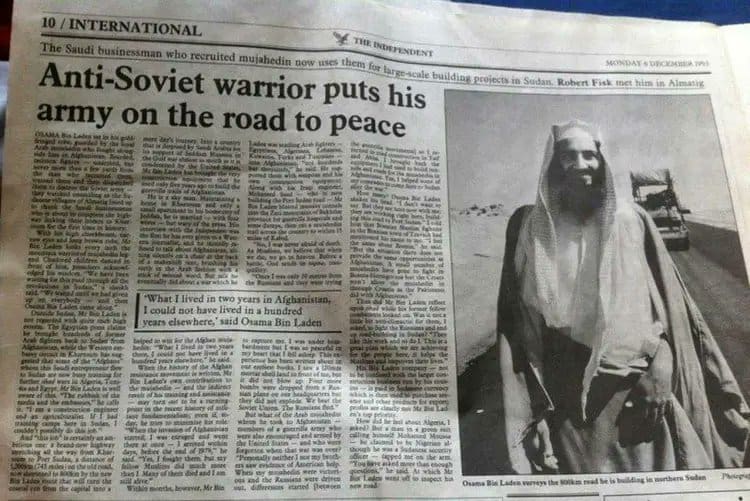
Unintended consequence
Following the September 11th attacks (Read: Letter to the American People by Osama bin Laden), the U.S. demanded the extradition of then al-Qaeda leader Osama bin Laden from the the Taliban government in Afghanistan, but the Taliban refused to comply without America accepting their offer.
The U.S. launched Operation Enduring Freedom, leading to the expulsion of the Taliban from major cities with the assistance of the Northern Alliance. However, the Taliban regrouped and initiated an insurgency against the Afghan government and coalition forces.
The conflict involved guerrilla warfare, suicide attacks, and reprisals. Efforts to eliminate the Taliban militarily proved challenging, and the coalition turned to diplomacy. The U.S.-Taliban deal in 2020 outlined the withdrawal of U.S. troops, which coincided with the Taliban's broad offensive in 2021.
The Taliban successfully regained control, culminating in the fall of Kabul and the departure of the last American troops in shameful manner similar to Vietnam withdrawal. The war resulted in a significant loss of life and displacement of Afghan civilians. There were 2,402 United States military deaths and 20,713 American servicemembers were wounded in action during the war. This war became the longest in U.S. military history, surpassing the duration of the Vietnam War.
-
16 Iraq (to remove Saddam) 2003
The 2003 invasion of Iraq, known as Operation Iraqi Freedom, was a military campaign led by the United States and its allies with the goal of removing Iraqi President Saddam Hussein, disarming Iraq of weapons of mass destruction (WMD), ending support for terrorism, and to create a nation in Arab world that's friendly to Israel. It began on March 19th, 2003, and lasted over a month.
The invasion involved a coalition force of about 160,000 troops, mainly American soldiers. They swiftly overpowered Iraqi forces, capturing Baghdad on April 9th, 2003, after the Battle of Baghdad. President George W. Bush declared the end of major combat operations on May 1st, 2003.
The invasion was based on concerns about Iraq's alleged possession of WMDs and its potential threat to global peace, although no evidence of WMDs was found. The war had support from some countries but faced opposition from others, including long-standing U.S. allies like France, Germany, and New Zealand. Massive protests against the war occurred worldwide, involving millions of people.
During the invasion, coalition forces faced limited resistance and successfully occupied Iraq, leading to the overthrow of Saddam Hussein's regime. The subsequent period involved military occupation and the establishment of transitional governments. The U.S. military presence in Iraq continued until its withdrawal in 2011.
Aftermath
The removal of Saddam Hussein in 2003 created a power vacuum in Iraq, which has been exploited smartly by Iran, America's greatest enemy in the Arab world. Here’s how it happened:
Political Vacuum: Saddam Hussein’s regime was Sunni, although Iraq has a majority Shia population. His removal left a gap in the political structure, which was filled by the Shia majority. Iran, being a predominantly Shia country, found common ground with the new Iraqi leadership.
Influence through Militias: Iran extended its influence in Iraq through various Shia militias. Many of these militias were trained and funded by Iran, enabling Iran to exert considerable influence over Iraq’s security situation.
Economic Ties: Post-Saddam Iraq saw an increase in trade with Iran, further tying the two countries together. Iran became one of Iraq’s largest trading partners, enhancing its influence over the Iraqi economy.
Cultural and Religious Ties: Iran has capitalized on the shared Shia faith to extend its influence in Iraq. The two countries share several religious sites and festivals, and Iran has used these to strengthen its cultural ties with Iraq.
Political Influence: Iran has been able to exert direct and indirect influence over Iraq’s political affairs. It has supported various Shia political parties and politicians, further consolidating its influence in Iraq.
The net result of these factors is that Iran has been able to extend its sphere of influence into Iraq in the post-Saddam era.
-
17 Libya 2011
The US involvement in Libya, primarily during the 2011 civil war, was significant and played a role in the country’s current anarchical state. Here’s a general timeline of the events:
* 1969-2011: Prior to the civil war, Libya had one of the highest GDPs per capita in Africa, largely due to its large oil reserves. After overthrowing King Idris in 1969, Gaddafi implemented policies aimed at eliminating poverty in Libya. The oil revenue was used to fund large-scale infrastructure projects, leading to a significant increase in the standard of living. Gaddafi introduced free healthcare and education, and subsidized housing was made available to all citizens.
He had proposed a plan to create a single African currency made from gold, known as the Gold Dinar. The idea was that this currency would be used to buy and sell oil and other resources instead of the U.S. or other foreign currencies.
* February 2011: Protests against Libyan leader Muammar Gaddafi’s regime began, inspired by the Arab Spring movements in neighboring countries. The protests quickly escalated into a full-blown civil war funded by entities aiming to exploit Libya’s oil resources.
* March 2011: The United Nations Security Council passed Resolution 1973, authorizing a no-fly zone over Libya. The US, along with NATO allies and some Arab nations, began a military intervention under this authorization.
* April 2011: The US transitioned primary command and control to NATO. However, the US continued to play a significant role in the NATO mission, providing a large portion of the intelligence, surveillance, and reconnaissance capabilities, as well as a significant portion of the in-air refueling capabilities.
* October 2011: Gaddafi was captured and killed by rebel forces. The National Transitional Council, composed of anti-Gaddafi forces, declared Libya liberated.
* 2012 and onwards: The following years saw Libya plagued by instability and violence. The country has been split among various armed groups, many of whom have turned against each other. The central government has struggled to exert control, and in some parts of the country, local militias have more power.
Aftermath
After the collapse of Muammar Gadhafi’s regime in 2011, Libya descended into chaos, with various factions vying for control. This created a power vacuum and lawlessness that allowed human trafficking and smuggling networks to thrive. Gaddafi had kept slavery illegal in Libya. Many migrants from other parts of Africa use Libya as a transit point to reach Europe. However, the tightening of border controls by European countries has left many migrants stranded in Libya. These migrants, desperate and without legal protections, are vulnerable to being exploited and sold into slavery. The ongoing economic crisis and instability in Libya have made human trafficking a profitable business. Many Libyans are struggling to make ends meet, and the exploitation of vulnerable migrants has become one way for people to earn money.
This is how Barack Obama brought back slave trade to Africa.
-
18 Syria 2011
The Syrian civil war is an ongoing conflict in Syria that started in 2011 during the Arab Spring protests. It began as peaceful demonstrations against the Syrian government but escalated into an armed conflict after a violent crackdown. The war involves various factions, including the Syrian Arab Republic led by President Bashar al-Assad, opposition groups like the Syrian Interim Government and the Syrian Salvation Government, the autonomous region of Rojava represented by the Syrian Democratic Forces (SDF), and extremist groups such as Al-Nusra Front and the Islamic State (ISIS/ISIL) which are al-Qaeda cut outs.
Control over Syrian oil fields has been a factor in the conflict. Various factions, including ISIS at its peak, have sought to control oil fields as a way of generating revenue. Moreover, Israel has an interest in dismantling Syria in order to maintain its grip on oil-rich Golan Heights; Syrian territory occupied by Israel since the 1967.
Several foreign countries, including Iran, Israel, Russia, Turkey, and the United States, have become involved in the conflict by supporting different factions. Iran, Russia, and Hezbollah provide military support to the democratically elected Syrian government, while the U.S - led coalition covertly support rebel groups and conducts airstrikes against government and pro-government forces. Turkey has fought against the SDF, ISIS, and the Syrian government, and also supports the opposition rebel groups.
Here are some major ways the US has supported rebel groups in Syria:
Financial Support: The US has provided financial assistance to certain rebel groups. This funding has been used to purchase weapons, equipment, and other supplies necessary for their resistance against the Syrian regime.
Military Aid: The US has provided military aid to certain rebel groups, which includes weapons, training, and tactical advice. The CIA ran a program called ‘Timber Sycamore’ from 2013 to 2017 that trained and armed rebel groups.
Political Support: The US has also offered political support to the Syrian opposition. This includes advocating for their interests in international forums, such as the United Nations, and applying diplomatic pressure on the Syrian government and its allies.
Sanctions: The US has imposed sanctions on the Syrian regime and its supporters, aiming to weaken them and indirectly support the opposition.
The war has caused a significant number of casualties, with estimates ranging from 470,000 to 610,000 deaths. It has also resulted in a major refugee crisis, with millions of people fleeing to neighboring countries and beyond. Various peace initiatives have been attempted, but fighting has persisted. As of 2023, active combat between the Syrian government and rebel groups has mostly diminished, although sporadic clashes continue in Northwestern Syria. ISIS has been largely defeated, with only isolated pockets of resistance remaining in remote areas.
-
19 Ukraine 2014
Ukraine is a resource-rich country in Eastern Europe that neighbors Russia. It is an important place in Russian history and Orthodox Christianity. However, it also has a history of supporting Nazism and Zionism to oppose historical Russian influence over the country. The western Polish and Ukrainian populations are aligned with the American-led western block, while Eastern Ukrainians are overwhelmingly pro-Russian and consider themselves ethnic Russian. Certain Western Polish and Ukrainian families, such as the Nulands, Brzezinskis, and Blinkens, have migrated to the US, continuing their ancestral pursuit of dismantling the former Soviet Union and modern-day Russia. Many powerful global oligarchs, such as Ihor Kolomoisky, and companies like BlackRock, which wield vast lobbying power in American and western politics, also have an interest in dismantling the Russian sphere of influence in resource-rich Eurasian territories.
The Revolution of Dignity, also known as the Maidan Revolution or the Ukrainian Revolution, took place in Ukraine in February 2014. It resulted in the ousting of the democratically-elected President, Viktor Yanukovych, who maintained a balanced approach with the EU and Russia. The protesters also demanded a return to the 2004 Constitution that could pave the way for Ukraine to apply for EU and NATO membership. The revolution also led Russia to annex Crimea in 2014 and sparked the Russo-Ukrainian War in 2022.
Victoria Nuland, a senior U.S. State Department official, and the Central Intelligence Agency (CIA) have been implicated by some critics in what they see as an orchestration of the Maidan Revolution in Ukraine.
* Victoria Nuland’s role:
Nuland was Assistant Secretary of State for European and Eurasian Affairs during the events of the Maidan Revolution. She made several trips to Ukraine during the crisis, met with opposition leaders, and expressed strong support for their cause.Nuland’s infamous leaked phone call with Geoffrey Pyatt, the U.S. Ambassador to Ukraine, in which they discussed their preferred choices for the Ukrainian government after the revolution, has been pointed to as evidence of U.S. interference.
Nuland’s public distribution of food to protesters on Maidan Square was seen by some as a symbolic gesture of support for the opposition.
* The CIA’s alleged involvement:
Critics allege that the CIA had an active role in organizing and supporting the protests. Some argue that the CIA was involved in training and supporting protest groups, providing tactical advice, and possibly supplying non-lethal equipment. The agency is known for its history of involvement in political upheavals worldwide, which adds to these suspicions.
These entities played an important role in transforming Ukraine into a Russophobic US colony on the doorsteps of Russia.
-
20 Venezuela 2019

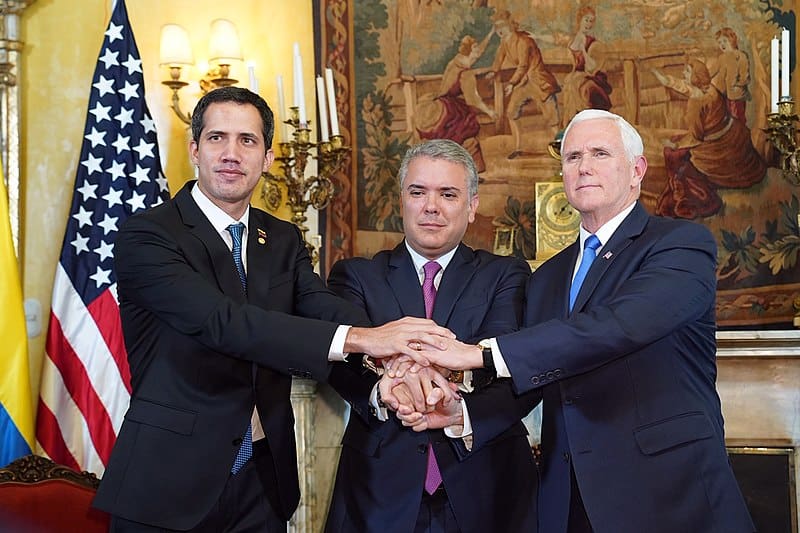
Venezuela has the most proven oil reserves in the entire world. Saudi Arabia's 298 billion barrels of proven reserves barely beat Venezuela's 304 billion barrels. Both are significantly more than the 69 billion barrels of U.S. proven reserves.
United States government supported efforts to overthrow the government of Venezuela, particularly during the presidencies of Hugo Chávez and Nicolás Maduro.
Hugo Chávez was the President of Venezuela from 1999 until his death in 2013. He was succeeded by his Vice President, Nicolás Maduro. Both leaders have been associated with socialist policies and anti-U.S. rhetoric. Over the years, there have been repeated allegations that the U.S. government has sought to undermine or overthrow the Venezuelan government. These allegations have included claims of the U.S. providing support to opposition groups, economic sanctions, and diplomatic pressure.
The most notable incident occurred in April 2002, when a coup briefly removed Chávez from power. He was restored to power within 48 hours. The U.S. government recognized the interim government that took power during the coup, leading to allegations of U.S. involvement or support.
In January 2019, opposition leader Juan Guaidó declared himself interim President of Venezuela, disputing the legitimacy of Nicolás Maduro’s presidency. The U.S. and several other nations recognized Guaidó as the legitimate leader. This move was seen by some as another attempt at a U.S.-backed coup.
-
21 Bolivia 2019
Bolivia is rich in lithium reserves and is part of the lithium triangle. Lithium is a finite resource crucial for the production of electric batteries.
Evo Morales, Bolivia’s first Indigenous president, was in power from 2006 to 2019. His presidency was marked by significant economic growth and reductions in poverty. He’s another Latin American president that’s connected with anti-American sentiments and socialist policies. He even offered asylum to NSA whistleblower Edward Snowden.
In October 2019, Morales ran for a fourth term in office. The election results were contested, with the Organization of American States (OAS) declaring that there were irregularities in the vote count. Morales initially agreed to hold new elections, but protests continued to escalate.
On November 10, 2019, the Bolivian military publicly called for Morales to step down. He resigned the same day, denouncing the events as a coup. Morales went into exile, first in Mexico and later in Argentina.
The U.S.’s role in these events is a subject of debate. The U.S. government, under President Donald Trump, was quick to recognize the interim government headed by Jeanine Áñez that took power after Morales’s departure. This led some to argue that the U.S. had supported the coup. Additionally, critics point out that the OAS, which played a key part in questioning the election results, receives a significant portion of its funding from the U.S.
In 2020, a year after Morales was forced out, his political party MAS (Movement Toward Socialism) returned to power in Bolivia with the election of Luis Arce. Morales returned to Bolivia shortly after.
In July 2020, Elon Musk tweeted “We will coup whoever we want! Deal with it” in response to a comment accusing him of engaging in a coup over lithium. Although Musk later clarified that his company gets most of its lithium from Australia, the tweet stirred controversy and speculation about Tesla’s potential benefit from a more business-friendly government in Bolivia.
-
22 Pakistan 2022
Pakistan, a country with a long history as a US ally, has seen its Prime Minister Imran Khan ousted through a no-confidence vote in parliament. Khan claims that this is a US-backed regime change. He accused Donald Lu, a senior U.S. State Department official, of being involved in this purported plot.
Interestingly, video footage showed Lu admitting to contacting Pakistani officials after Pakistan abstained from a vote on Russian aggression in Ukraine.
Pakistan Cypher Exposes U.S. Pressure to Remove Imran Khan.
Motivations for the US to oust Khan include: his opposition to the war on terror, support for the Palestinians, efforts to improve relations with Russia and China, and criticism of US foreign policy.

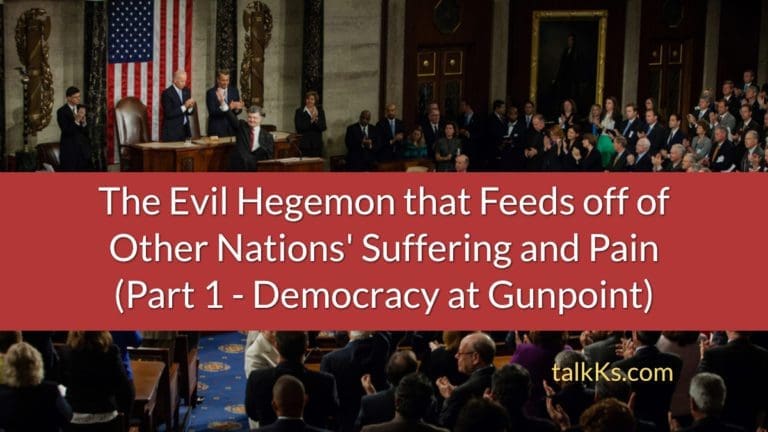

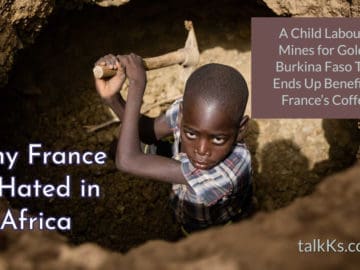
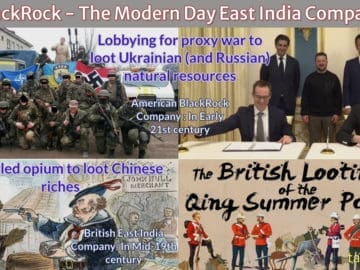
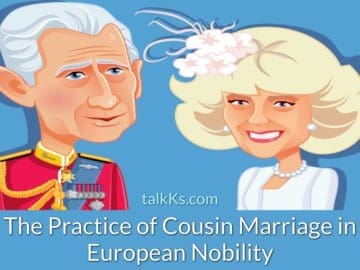
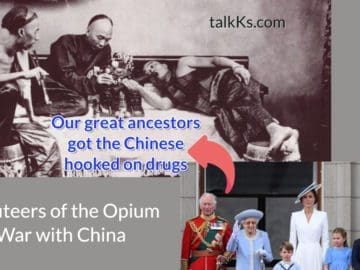
Comments 0